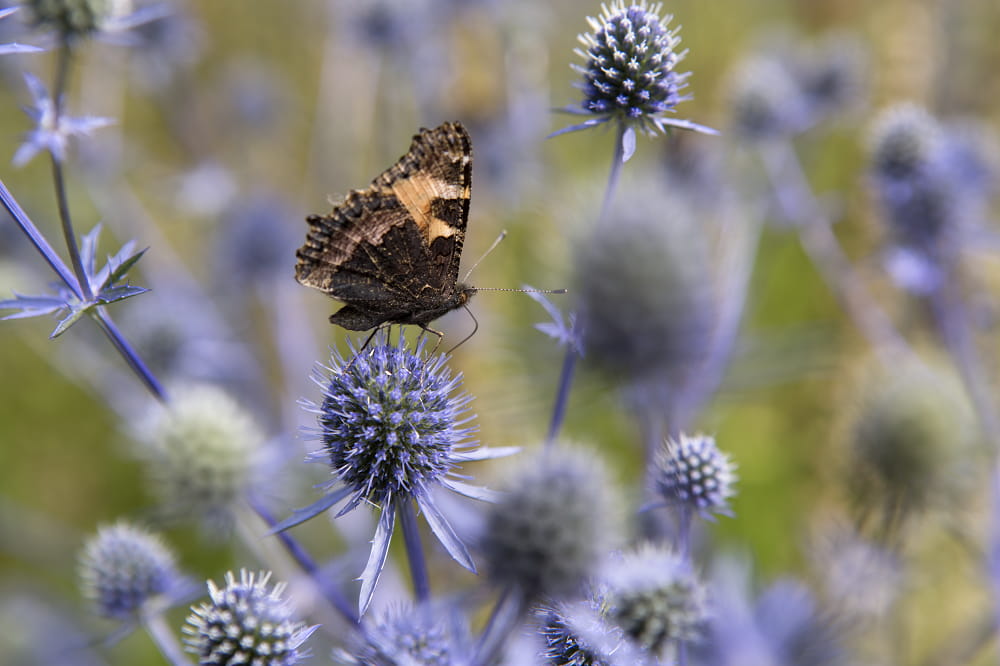Don't panic! Here's how to help your potted plants survive the summer heat

It is warm and beautifully sunny weather. This is great for garden plants, because their roots search deep into the soil for cooling water while they can fully enjoy the sun. Unfortunately, your potted plants do not like the scorching heat! However, there is no reason to panic: with these tips you can guide them through the hot weather just fine.
Read more below the advertisement
Tip: Save this post for later so you can easily find these tips again.
The biggest difference between plants in the open ground and those in pots is that the roots of the potted plants cannot penetrate the soil. Because the pot is also 'above ground', the potting soil dries out easily on all sides and your plants can sit down at the hanging leaves... With these tips you can protect potted plants and ensure that they can survive the heat well.

Perhaps the most important thing is to water plants at the right time. If you water during the day in hot weather, a lot of water evaporates before the plant has had a chance to absorb any of it. In addition, drops on leaves can cause burns.
- At dusk, when the temperature starts to drop. The water can then quietly sink into the potting soil all night long and the plant can then absorb it well.
- Forgot in the evening? You can also water early in the morning before the sun has risen. This ensures less evaporation than when you water during the day and the plant can still absorb water before the heat hits.
Watering is one thing, but retaining water is another. Evaporation is actually the biggest problem. You can limit this by applying a layer of mulch , such as straw, wool or hay, to the top layer of your potting soil. Do this after you have watered. This way, water evaporates less quickly at the top. Incidentally, it is not a good idea to close the hole at the bottom of the pot: if it does rain heavily, the water cannot wash away and your plant can drown.

Watering with a watering can or garden hose is a great way, but you can also water in other ways. Using a drip hose or placing an olla pot gives a constant supply of water. Because it goes slowly, the water is also better absorbed by the pot.
An ollapot is especially suitable for large pots and containers. See below how Anne makes such a pot!

If there is really a lot of heat coming and your pot is in full sun all day, then it can be a solution to temporarily move the pot to a less hot spot, such as the (partial) shade . Another sunny spot is also possible, but then place it in a border, for example, so that the pot is protected from drying out by other plants.
What can also help is to place all the pots together, this will reduce the heat around the pots and water will evaporate less quickly.

- How to choose the right plants
- The best care tips
- Colour and atmosphere all year round

Are your pots right next to the wall? Then there is a big chance that they are in the rain shadow: when rain falls, it often stays dry in that area. The chance of drying out is therefore extra big there. Keep an extra eye on these pots and if necessary move them to a place where rain can fall.
Tip: For tomatoes , the rain shadow is a very good place. Because the leaves do not get wet, the chance of fungal diseases, such as blossom end rot , is considerably smaller.
Is moving not an option? Then an umbrella or parasol can also be a good option! By shielding your plants from the sun, you remove the worst heat.

If your plant is suffering from heat stress now, this tip is not a solution. Are you going to plant a new pot or repot in the spring or autumn? Then you can consider adding a layer of hydro grains to the bottom of the pot or mixing them with peat-free potting soil . These baked clay grains retain water well.
Tip

The more mass the potting soil has, the less evaporation. A large pot will therefore dry out less quickly than a small one. If you have the chance, take the largest pot or container you can find. Not only is the water management easier, you can also make many beautiful plant combinations for summer pots . Enough space for many plants!


The more different plants you have in a pot, the less evaporation. In addition, plants can strengthen each other, they differ in height, in water requirements and also in type of roots. This ensures strong pot vegetation.
Between tall plants, such asornamental grasses and Echinacea purpurea , also place lower plants, such as catnip . On the bottom you can place ground covers , or even mosses. Not only the top can be planted, by adding hanging plants the sides of the pot will also be more protected. Moreover, this often looks beautiful.









